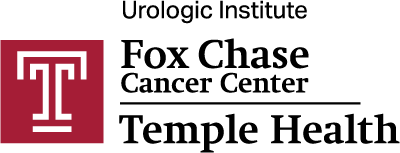Daniel Edmundowicz, MS, MD, FACP, FACC, Chief, Cardiology, Temple University Hospital discusses the challenges of maintaining long-term adherence of preventative medications for hypertension. Antihypertensives and lipid-lowering medications have the highest rates of non-initiation; only about half of patients in a particular study remained on their medications for two years. Combine this with another adherence issue – taking the correct dose at the correct time – and it’s easy to see why nonadherence is a major barrier to patients meeting their blood pressure goals.
With the Temple Comprehensive Hypertension Program, a multidisciplinary team works with patients to understand suboptimal adherence and the factors that lead to it, while also helping them to develop strategies to improve adherence and ultimately reach their target blood pressure goals.
Hi I'm dan in Underwood's chief of cardiology at Temple University Hospital and medical director of the Temple Heart and vascular Institute. Thanks for joining me today for a discussion on adherence to blood pressure therapies and the challenges that we face. It's been clear for quite some time that when we look for the prevalence, the awareness and even the treatment and control of hypertension, there's been significant change over the past couple of decades. This is data from cirque research that shows us over the time period of 2000 to 2010 that um our low middle income countries unfortunately have fallen way behind on control of of hypertension. We've done a little better job obviously in higher income countries but there's a huge opportunity for better awareness and certainly better control for the prevention of all of the morbidity and mortality that is associated with hypertension. We know that as part of control prescription of an adequate number and dose of medication is important. But adherence with medication even when it's the appropriate and effective regimen is a crucial part of the equation. Let's talk a little bit about the reality of medication. Adherence. We know and have known for quite some time that maintaining long term adherence of preventive medications. Those that we prescribe not for symptom suppression but for prevention of associated comorbidities is a major challenge in the cardiovascular world. Antihypertensive and lipid lowering medications have the highest rates of non initiation. Um And only about half of patients that have been studied in the cardiovascular realm remained on these types of therapies for two years, interestingly, that same low range of adherence is seen in secondary cardiovascular prevention studies, patients who've already had a myocardial infarction or have symptomatic angina still taking those medications to prevent further symptoms or cardiovascular events remains challenging. So today, what I'd like to do is examine successful hypertension treatment and management by looking at adherence. What is suboptimal adherence and persistence of therapy? We'll talk about detecting suboptimal adherence when it exists. We'll talk about the contributing and associated factors and look at the end at just a couple of strategies for improving adherence. Some definitions, adherence, the extent to which a person's behavior taking medication following a diet executing lifestyle changes all of that because corresponding with the agreed recommendations from a health care provider. So that's adherence and specifically when it comes to adherence to hypertension therapy. Um there's a couple nuances about medication adherence that I think are important to to to to point out and that will will concentrate on today that is the initiation implementation and discontinuation as part of the process of medication adherence. So let's talk about the process of medication adherence, particularly starting with initiation. So, uh as obvious as it may sound initiation is the time from prescription to until the first doses taken by the patient. The surprising aspect of this is that 4-5%% of patients never start a medication even within clinical trials that have looked at adherence. So patients walking out of your office or leaving their provider with good intentions, perhaps discussed. 4-5% of them may never even start that medication for various reasons, implementation. So this is the extent to which a patient's actual dozing corresponds to the prescribed dose ng that may have been discussed with the patient and that has a lot of opportunity for problems with adherence. We know for example that there's day to day variation in drug taking, whether that's due to forgetfulness. Um either negligence by mistake or negligence that's purposeful because of perhaps cost saving attempts taking a medication every other day or cutting it at half to perhaps save money on that particular therapy. We know if we look at medication adherence and this process, there's actually some other interesting aspects there. These are two patients with the same adherence rate 80% in this particular study to a once daily blood pressure medication. Each vertical bar is a missed dose and each blue point corresponds with one opening of an automated pill box where we were able to measure when the patient actually opened the box to get the pill. Now, the interesting thing here is even amongst adherence and implementation, there are very, there is variability. Right? So this patient's non adherence was actually kind of spread out over the the interval of sampling this patient did really well except for a significant what we'll call drug holiday or hiatus and therapy. And so the actual um therapeutic implications of non adherence can be different amongst patients with different implementation issues for their medication. Finally, let's talk about discontinuation again, somewhat of an obvious term, the end of therapy also called non persistence. But what's important to know is the reality and that is that 50% of patients, particularly in the studies that have looked at antihypertensive therapies, 50% patients stop their treatment after one year and that's even there's even a higher prevalence of non persistence and patients that are younger. Let's take a look at some factors that impact medication adherence. I mean, the list is long. Uh and some of these, we certainly deal with and recognize on a daily basis. The socio demographic and socio economic factors that go into medication adherence are are well known. Uh and we have many mechanisms in place to try uh and overcome some of these factors, but many are certainly persistent. If we look at therapy related issues in medication adherence and challenges, certainly the more complex regimens more than perhaps twice a day dosing regimen can be very challenging for patients. Um and certainly those medications that have would all say sub optimal side effect profiles are, are certainly a challenge when it comes to adherence from our perspective and we'll talk a little bit more about it. The failure to detect clues from patients about adherence issues is an opportunity for improvement. Um and we'll talk a little bit about that, but certainly in our short office visits, taking some time to focus on adherence issues with medication is extremely important. And then finally the patient related issues or condition related issues, uh those with multiple chronic conditions, those with dementia and other challenges that make even the most basic adherence issues a challenge for them. So the list is long for those factors that impact medication adherence. Uh and it really is something that at least in the amount of time that can be taken during an encounter uh important to review some of these detecting sub optimal medication adherence is even more challenging and that is because we really don't have significant the effective tools to help with medication adherence and detecting it. We all take, you know, a reconciliation history, but unfortunately it's well documented in the literature that a patient interview while as it's simple. Uh it's probably no better than tossing a coin. The patients want to please their providers, they want to they certainly want to uh to meet expectations. For the most part. Um Some patients just don't want to get into the discussion about medication adherence and so there are some avoidance, their avoidance issues. Unfortunately, while it's simple, the patient interview is not very effective. Now, within the context of the electronic medical record, we have prescription refill data, we can go and look at dispensing records for our patients. Uh And of course this, it really does take a lot of assumption uh into the fact here and that is that we're assuming that patients are indeed taking their medications, um certainly adequately every day that they're available. We are assuming that they're going to the same pharmacy to get these prescriptions filled. And so even that while potentially helpful has certain weaknesses. And so unfortunately we do not have a very effective way to detect sub optimal medication adherence. So it really does get back to probably the patient interview and um hopefully that provider patient relationship that is effective to identify those challenges that the patient may be having with medication adherence. Now, what does the future hold in this regard? Well, some considered to be a little scary and that is that some pharmaceuticals can be manufactured with a small ingestible sensor. Uh and that sensor can certainly hook up with the patient's wearable patch or wearable watch or whatever technology there is uh and that can be uh certainly secure but accessible. Uh and the health care team can uh diagnose, I'm sorry, not just diagnosed, but kind of track medication usage. Um of course it is the definition of the healthcare team that gets some people nervous about this technology. Um so technology marches on. Unfortunately, adherence rates remain challenging. Finally, some strategies for improving medication adherence given, given all of these uh these challenges. Again, I mentioned the provider patient relationship and the ability to communicate in what time is available to do. So the importance of staying on therapy, whether that's not just verbal but also some written and uh if the patients are open for it. Other higher tech communications that remind patients the importance of adherence. The idea is to empower the patient uh to really give them positive feedback about the behavioral and clinical improvements that are being seen with medication therapy. That goes a long way it really does in uh in improving adherence. The patients hopefully will have the ability to be somewhat organized about their regimen. The pill boxes that are available to kind of separate their dosages for each day, just trying to organize it. Um and certainly having the ability uh to uh to have these self management strategies can improve adherence. Um on our part for providers certainly simplifying the regimen as much as possible both for using combined medications, uh combined uh pharmaceutical agents in one pill and simplifying the regiment throughout the day and then making these uh preparations accessible to the patient uh is certainly critical. I think the key is that successful hypertension treatment and really any medication treatment for a chronic condition needs to be available needs to be affordable and certainly adjustable based on the patient's adherence. So hopefully today we've successfully defined what suboptimal adherence and persistence is. We've looked at ways that we tried to detect sub optimal adherence. We looked at the contributing and associated factors and we talked about some basic strategies for improving adherence in our patients. thanks so much for your attention.


